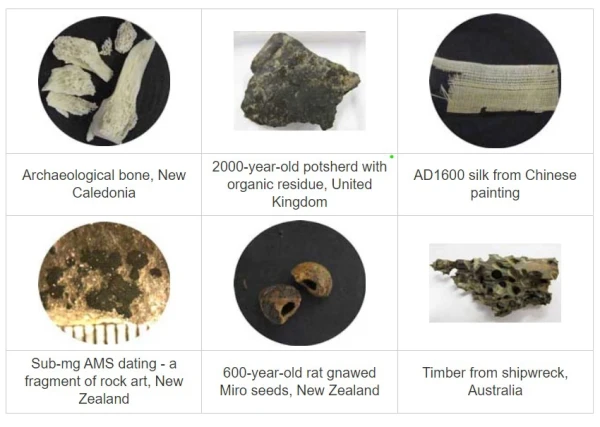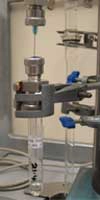The Accelerator Mass Spectrometry (AMS) technique enables small samples to be dated. This means small samples previously considered to be unsuitable are more likely to be datable; scientists can now select from a wider range of sample types; dates can be made on individual species or different fractions; greater numbers of radiocarbon measurements can be made resulting in more detailed chronological evaluations; more stringent chemical treatments can be applied to remove contaminants; and valuable items can be sub-sampled with minimal damage. Consequently, AMS dating is invaluable to a wide range of disciplines including archaeology, art history, and environmental and biological sciences.
Because of the wide range of different materials that can now be dated we recommend you contact us first to discuss your 14C requirements.

AMS Combustion and Graphitisation

Shell CO2 extraction
The construction of 4 new AMS CO2 and graphitisation lines in 2010 has enabled us to quadruple our throughput and reduce our turnaround time for AMS (now averaging 6 weeks), while maintaining our quality control, improving our background limits, and reducing sample size requirements.
Organic samples are converted to CO2 by oxidation at 800oC using CuO. The CO2 is purified in the presence of silver wire to absorb any SOx and NOx that is produced. CO2 is collected from shells by reaction with phosphoric acid. The CO2 is then reduced to graphite with H2 at 550oC using an iron catalyst.
Pressed graphite is sent to the Keck Radiocarbon Dating Laboratory at the University of California, Irvine and the Center for Applied Isotope Studies, the University of Georgia for analysis.
At the Laboratory, aside from modern and background standards, routine in-house measurements are also made on standards of like composition and age to the sample being dated. This enables us to maintain a constant check on the accuracy of different pretreatment and CO2 purification processes. Moreover, our background standards are also sample-specific and therefore better reflect the true background limit of our system.